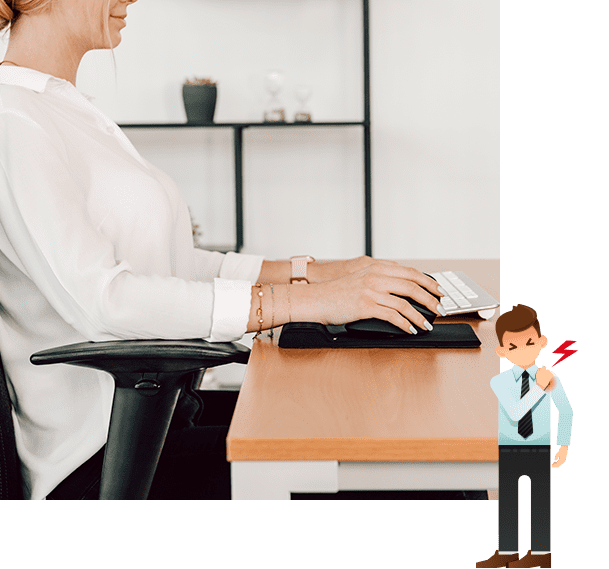ERGONOMICS AT HOME AND AT WORK - by Hama FOR PREVENTION OF HEALTH PROBLEMS
Posted by Aswathy Mohan on
ERGONOMIC ALL-ROUND CARE FOR HOME AND AT WORK
Germans spend an average of seven to nine hours a day at the workplace or in their home office. So it’s all the more important that the desk at work and at home is ergonomically arranged with the aim of maintaining and improving health. Prolonged lack of movement, poor posture and strain can cause damage to the musculoskeletal system.
Through the adjustment of devices, ergonomics ensures that work is carried out efficiently and, above all, safely. Here, the following rule of thumb applies: You adjust your equipment to fit you, not the other way round.
A workstation that has been set up ergonomically has positive effects not only on physical health; it is also shown to have a significant impact on performance and work motivation.
HAMA OFFERS THE RIGHT ERGONOMIC SOLUTION FOR PREVENTING HEALTH PROBLEMS
Specially designed products from Hama are gentle on the four typical pain areas and, when combined with the necessary know-how, promise comprehensive, ergonomic all-round care for everyone.
TO PREVENT HEADACHES
Artificial lighting next to the monitor supplements daylight and room light. With a manual dimmer function, the light can be adjusted to your own biorhythm, and thus boosts concentration and helps prevent headaches.
EXPERT TIP:
A regular blast of air, and coordinated, muted room colours likewise support concentration and performance, and reduce head complaints.

TO PREVENT NECK PAIN
Viewing a monitor screen from an incorrect angle, frequent twisting of the head, and incorrect desk height can cause tension in the neck. With flexible accessory products for precise, custom alignment of devices, this can be quickly counteracted.
Flexible monitor arms, angled notebook stands and adjustable document holders allow adjustment to individual eye level. In this way, holding the head in an unnatural position for long periods of time can be avoided.
EXPERT TIP:
The ideal height for a desk is, on average, 75 cm. The head tilts when viewing the top line on the screen should be a maximum of 35°.


TO PREVENT WRIST PAIN
Pains can occur quickly in the wrist as a result of unnatural hand posture when doing repetitive screen work with a mouse and keyboard. The level at which your arms rest on the desk is also decisive. The right equipment supports the ergonomically correct posture.
EXPERT TIP:
Lower arm and hand should ideally be in a horizontal line when working with a mouse and keyboard.

TO PREVENT BACK PAIN
Back pains are the result of long periods of restricted mobility when working, and of incorrect posture when sitting, standing or bending. They are the most commonly reported health problem in the workplace and therefore need special attention.
EXPERT TIP:
Changing your sitting position regularly and doing exercises to loosen up can have a positive effect on posture.

FIT AT THE WORKSTATION
By practising these four small exercises, you can relieve the four pain areas – head, neck, wrists and back – and release minor blockages.

EXERCISE 1
- Close your eyes.
- Using your fingertips, stroke from your eyebrows outwards to your temple; repeat several times.

EXERCISE 2
- Turn your head slowly to the left and then look up.
- Now hold your head straight and repeat the exercise for the right side.

EXERCISE 3
- Stretch your arms above your head and cross your wrists.
- Slowly tilt your upper body to the left and then to the right.

EXERCISE 4
- Stretch your arms forward at shoulder level, palms facing down.
- Bend your wrist so that the fingers are pointing down.
- Using your other hand, carefully pull the fingers towards your body.
- To stretch in the other direction, simply stretch your arm with your palm facing up and repeat the exercise.
ERGONOMICS CHECKLIST
1. Head pain
Adjustment of lighting and room colours for greater concentration
2. Neck pain
Alignment of monitor and work documents to individual eye level
3. Back pain
Arrangement of work areas for greater mobility
4. Wrist pain
Adjustment of input devices and wrist rests for a natural hand posture


